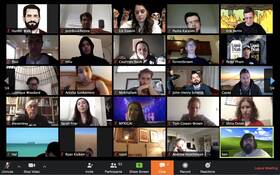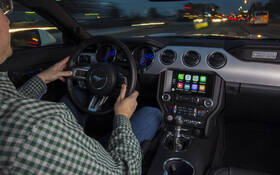Study: Some Bad Drivers are “Zoom Zombies”
Our daily lives have profoundly changed since the start of the COVID-19 pandemic, from the way we work and communicate to our driving habits. Could it be that one has an adverse effect on the other?
In a recent Wakefield Research study commissioned by Root Insurance in the U.S., 54 percent of people reported trouble concentrating after a video conference call, basically turning into so-called “Zoom Zombies.”
- Also: Watch: Lexus Shows How Dangerous Texting While Driving Can Be
- Also: Survey: Unsafe Driving Still on the Rise Across Canada
The more we spend time indoors and watching screens, the more we lower our ability to resist the draw of technology when we’re driving.
“COVID-19 fundamentally changed the way we interact with our vehicles,” says Alex Timm, Root Insurance CEO. “As many abruptly shifted to a virtual environment, Americans’ reliance on technology dramatically increased along with their screen time, causing a majority of drivers to carry this distracted behavior into their vehicles.”

According to the same study, 66 percent of respondents said they checked their phones while driving at least once in 2020, up 8 percent from the previous year. About a quarter admitted to checking their phones within 15 minutes of getting in the car, also up nearly 10 percent.
Obviously, this kind of behaviour negatively affects our driving—pretty much everbody will agree on that. Yet, 30 percent of respondents claimed they could still drive safely. That number jumps to 42 percent among Millennials and 50 percent among those identified as Gen Z.
“Many (people) have honed their use of technology and their ability to multitask during the pandemic but living room skills do not translate behind the wheel,” said Timm. “As drivers return to the road, they should recognize the dangers of false confidence to protect themselves and their passengers.”
The study comes just a few days after Lexus demonstrated the dangers of texting while driving. On average, the length of time it takes to send or receive a text message when you’re behind the wheel is 4.6 seconds. At a speed of 90 km/h, it’s like driving an entire football field with your eyes closed.











